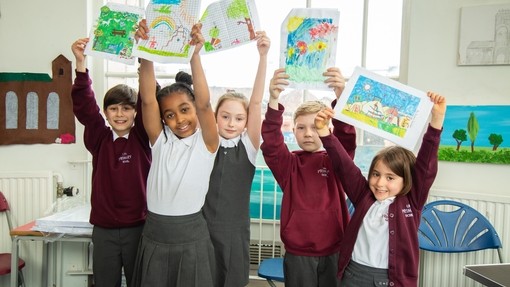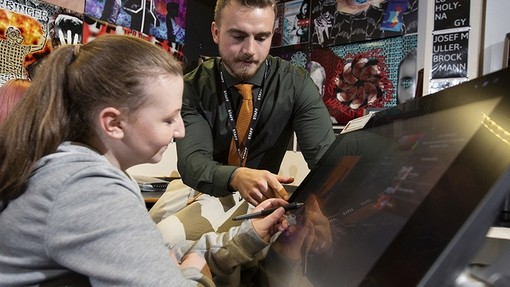
How to fund the arts in your school
Content
One primary teacher and former cultural education consultant shares her tips on raising funds for school arts activities
A creative education is vital if our young people are to thrive in an increasingly uncertain future. As technology develops beyond what we could have ever imagined, the confidence, communication and collaborative skills pupils can gain from subjects like performing and expressive arts will prove invaluable.
But providing this education is harder than ever, Darren Henley, chief executive of Arts Council England, wrote in Tes. When budgets are tight and external pressure is on, the barriers to delivering inspiring activities can seem impossible to overcome.
Yet by integrating a few fundraising initiatives into your arts and cultural provision, you can not only gain funding and greater freedom to do more on arts and culture, but also help secure its future, too.
Whether you’re on your Artsmark journey or not, here are some top tips that could help you to generate income not only for your activity, but also from your activity.
Fundraising
1. Involve your young people
Working with young people will ensure that their interests are at the heart of your fundraising plans and that they’ll be the ones to benefit directly. Many young people are naturally brilliant social entrepreneurs and will have a fountain of ideas to help lighten the load. Getting them involved is an exciting way of developing authentic activity and nurturing their decision-making skills, a key element of the Artsmark engagement criterion.
2. Be authentic
This is one of the Arts Council’s Quality Principles and can be one of the trickiest to interpret. One way to approach this could be in planning your yearly school play: you involve pupils in all elements of the production, from set and costume design, stage management to box office and marketing roles. Adding a small charge for tickets and involving young people in the whole process means the experience is not only authentic but also generates income. This model can be used for all sorts of events; from art exhibitions to fayres and fetes.
3. Be workload savvy
You already have a jam-packed diary, so try and find ways of fundraising to align with work you’re already doing or have identified in your school improvement plan. Could you rent existing spaces or utilise all staff members to help generate extra income? For example, renting your school hall out when the caretaker is on site means no additional staff are required to look after the bookings.
Collaborative partnerships
1. Artsmark Partners
Partnerships are integral to successful arts and cultural provision. To highlight and support their importance, there’s a criterion dedicated to them in the Artsmark journey, and contacting your local Artsmark Partners is a great place to start when building new connections. The cultural organisations in this network are trained to understand how their offer aligns with schools’ Artsmark journeys, and arts and culture in education.
2. Joining forces
Working in partnership with organisations or fellow education settings to bid for funding from grants, trusts and foundations can be a way of making these traditionally competitive and admin-heavy funding avenues less arduous and more successful.
3. Friend-making before fundraising
Invite the local community to your events and try to build long-term relationships within your community; for example, with parents, local businesses or retirees with great skills and time to give. By spending time making friends, sustainable partnerships develop. This could result in anything from volunteers to help with after-school clubs to businesses sponsoring trips and more.
Get social and share
1. Realise your assets
Explore and understand the resource that your school has at its fingertips. You have a range of facilities and an experienced and capable staffing body – how can you utilise this in an innovative and productive way? Think about how your great assets could be shared or traded: could you share your hall with a local music group in return for termly workshops?
2. Don’t underestimate the power of social media
Facebook and Twitter can be brilliant ways to spread the word about your school’s fundraising activities. The bigger the online audience, the wider the reach. Not only does this give you a free platform for promotion and celebrating your achievements, but schools have also seen success with everything from recruiting more pupils, to securing sponsorship from local businesses. There’s lots of support out there on how to get started with social media. But remember to check your permissions before sharing.
3. Already got an engaged online audience? How about crowdfunding?
Crowdfunding works through an online platform where you share your cause and your community donate, sometimes in return for a reward such as tickets to a play or their name on your website, and sometimes just because they want to help. Crowdfunding works brilliantly if you’ve got a wide online audience of parents, carers and members of the local community. Schools have seen great success in raising money for new spaces like theatres and equipment.
Fundraising can seem daunting at times, but, if done well, it could make your arts and cultural provision more sustainable and ensure the arts have a legacy in your education setting when outside pressure can make this feel difficult. Finally, do get in touch with your local Bridge organisation to find out if there’s any support in your local area. I hope you’re feeling inspired to get stuck in.
Jade Poole is a primary teacher and former cultural education consultant at The Real Ideas Organisation Bridge organisation


